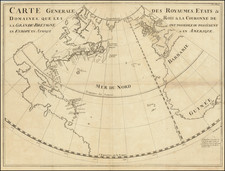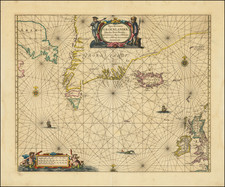Durable Transatlantic Telecommunication Finally Established.
The Recovery of the 1865 Transatlantic Cable.
This is a chart of profound historical significance for global communication. This hand-drawn map by Mr. Moody, the Great Eastern's second officer, under Captain James Anderson's guidance, depicts the moment at which Europe and the Americas were finally, durably linked with permanent telecommunications.
The first transatlantic cable came into operation in 1858, however, the quality was poor and it failed three weeks after its first message. In 1865, the project was attempted again. However, it too broke down when the cable snapped and sunk into the 2.5-mile-deep abyss of the Atlantic. Initial efforts to retrieve it proved unsuccessful, due to inadequate equipment. However, the following year, the Great Eastern steamship, with improved gear, successfully laid a new cable and embarked on another retrieval mission for the broken cable.
This chart traces the intricate process of this operation. Various annotations indicate where buoys were placed by the Great Eastern and her sister ships, the Albany and the Medway, as well as the path of the elusive cable of 1865. The annotations include different symbols: black and blue circles to indicate the buoys placed by the Great Eastern and Albany, respectively, with dashed circles marking those that went adrift. Yellow circles denote buoys placed by the Medway. A solid red line shows the path of the 1865 cable, while a dashed red line indicates its projected path. Black, blue, and yellow diamond symbols mark where the cable was hooked by the Great Eastern, Albany, and Medway, respectively.
The 1866 Expedition
In 1865, an ambitious endeavor was launched to lay the second transatlantic cable. The SS Great Eastern, a monumental ship built by John Scott Russell and Isambard Kingdom Brunel, undertook the task, captained by Sir James Anderson. However, more than halfway through the task, the cable snapped and, despite numerous attempts to rescue it, had to be abandoned.
Undeterred, a third cable was successfully laid from the Telegraph Field in Foilhomurrum in July 1866, reaching Heart's Content, Newfoundland, by the end of the month. Remarkably, the 1865 cable was also retrieved and repaired, resulting in two functional cables. The twin cables transformed communication across the Atlantic, reducing a fortnight-long voyage to a two-minute message transmission.
This chart chronicles the tireless efforts behind this historic feat, which revolutionized personal, commercial, and political relations across the Atlantic. Various symbols and annotations denote buoy placements, the trajectory of the 1865 cable, and the successful cable retrieval spots. The jubilant note, "3.40p.m. Hooked cable... Got end on board and into Testing Room 5.30a.m. Sepr. 2nd. ALL RIGHT!!!" testifies to the triumphant retrieval of the broken cable.
In the 1870s, duplex and quadruplex transmission and receiving systems were installed, enabling the relay of multiple messages over the cable. Since 1866, a permanent cable connection has existed between the continents, transforming international communications. This chart serves as an artifact of the initial steps towards this significant milestone, marking the end of weeks-long ship-borne dispatches and ushering in an era of near-instantaneous intercontinental communication.









![[Untitled Map of The Atlantic Ocean, Europe, Africa, the Middle East, and Eastern Canada]](https://storage.googleapis.com/raremaps/img/small/89582.jpg)

![[Whaling Operations] Pesca della Balena | Pesca del Pesce Sega](https://storage.googleapis.com/raremaps/img/small/78472.jpg)

![[Terceira Island] Tercera](https://storage.googleapis.com/raremaps/img/small/76123.jpg)
